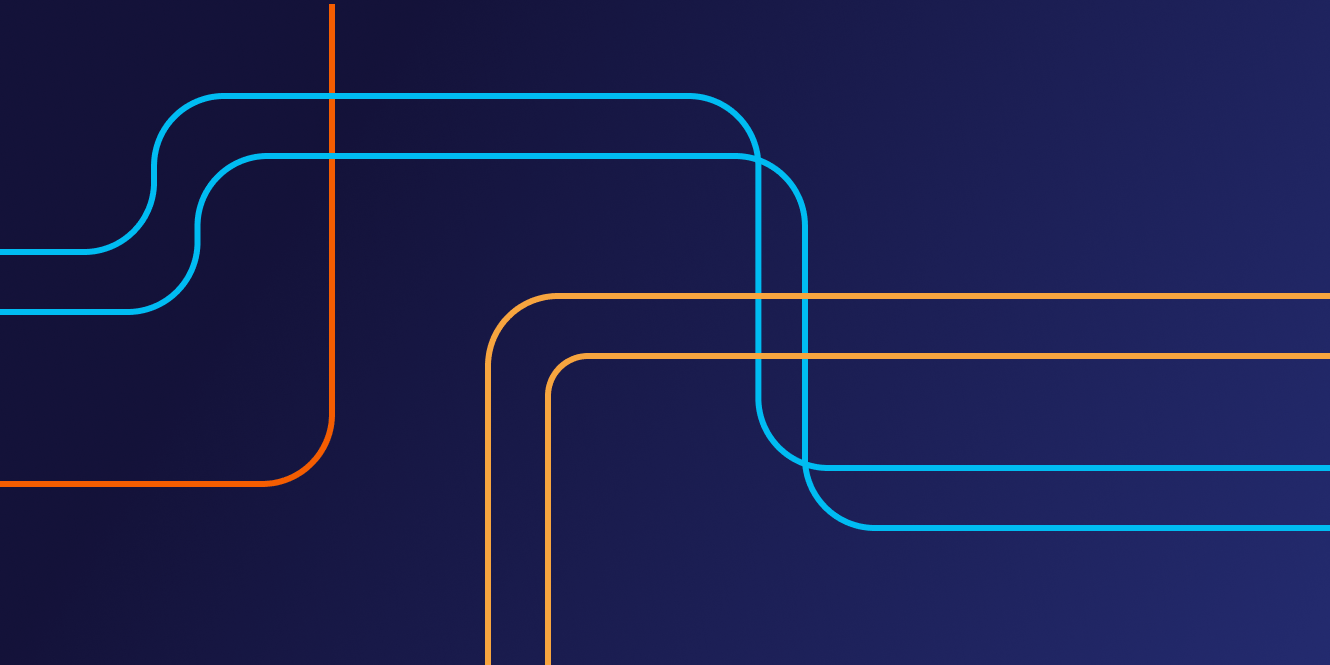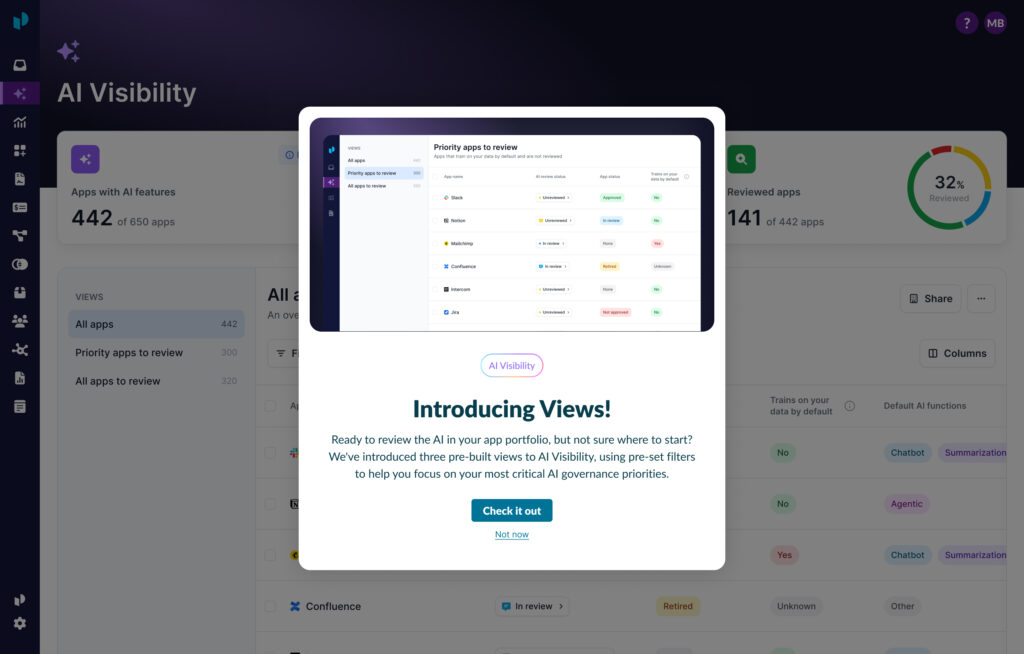
Master Service Agreement (MSA) vs. SLA: What’s the difference?
When it comes to SaaS management, two key documents play a vital role in ensuring smooth collaboration and successful outcomes: Service Level Agreements (SLAs) and Master Service Agreements (MSAs). While there is a frequent misconception that these agreements can be used interchangeably, understanding their distinct purposes is crucial for both SaaS vendors and buyers.
By nature, strategic SaaS management is an ongoing process. Selecting the right agreement will help signing parties ensure optimal vendor relationships, simplify future agreements, and speed up negotiations.
What is a Service Level Agreement (SLA)?
An SLA acts as a formal agreement between a service provider (often an IT department or vendor) and a client (an internal team or external customer). It outlines the specific details of the SaaS application, the expected quality and availability of the application, and the procedures for handling service disruptions. In essence, an SLA is a roadmap that sets clear benchmarks for performance and service expectations.
What are the key components of an SLA?
- Service definition: A comprehensive description of the SaaS application, encompassing its functionalities, features, and limitations.
- Performance metrics: Measurable indicators that track the effectiveness of an application. Common metrics include uptime percentages, response times for support tickets, and resolution times for service issues.
- Service credits: Repercussions for vendors when performance falls below agreed-upon standards. Service credits can take the form of discounts, fee reductions, or extended service periods.
- Escalation procedures: Defined steps to be followed when service issues arise, ensuring prompt and efficient resolution.
What’s the difference between an internal vs. external SLA?
It’s important to distinguish between internal and external SLAs. Internal SLAs govern the relationship between an IT department and internal customers within an organization. These agreements often function more as service guidelines, outlining expected response and resolution times for internal service requests.
External SLAs, on the other hand, are binding contracts between vendors and external clients. Failure to meet service level expectations in external SLAs can have more significant consequences, potentially leading to contract termination.
What is a Master Service Agreement (MSA)?
An MSA serves as a broader framework agreement established between a vendor and a client. It lays the groundwork for a long-term business relationship, outlining the general terms and conditions that govern all current and future projects and services provided by the vendor.
What are the key components of an MSA?
- Scope of services: A detailed breakdown of the services covered under the agreement, including potential future services that may be added.
- Pricing and payment terms: Clear definitions of service costs, payment schedule, and any additional or excluded expenses.
- Legal and contractual compliance: Guarantees that both parties adhere to all relevant laws and regulations.
- Dispute resolution: A predefined process for addressing disagreements that may arise during the course of the business relationship.
- Confidentiality: Protections for sensitive information shared between the vendor and client.
- Termination procedures: Defined conditions and procedures for terminating the agreement.
What are the benefits of utilizing MSAs?
- Efficiency: MSAs streamline the contracting process for future projects between the same vendor and client.
- Clarity: It establishes clear expectations for both parties, reducing ambiguity and potential conflicts.
- Compliance: MSAs help ensure adherence to legal and regulatory requirements.
- Consistency: They promote consistent services and communication throughout the business relationship.
- Reduced risk: By outlining clear responsibilities and procedures, MSAs mitigate potential risks for both vendor and client.
- Cost savings: The streamlined contracting process facilitated by MSAs can lead to cost savings in the long run.
- Flexibility: MSAs can be adapted to accommodate specific project needs while remaining within the established framework agreement.
- Enhanced collaboration: Clear communication fostered by MSAs promotes more effective collaboration.
- Professionalism: Formalized agreements project a professional image and instill confidence in the business relationship.
- Long-term success: MSAs provide a solid foundation for a successful and enduring partnership between vendor and client.
What are the key differences between SLAs and MSAs?
While both Service Level Agreements (SLAs) and Master Service Agreements (MSAs) contribute significantly to effective SaaS usage, their functions and legal weight differ considerably. Here’s a breakdown of the key distinctions:
- Governing area: An MSA is an umbrella that covers the entire client-vendor relationship. It establishes the overarching principles governing all interactions, projects, and services provided by the vendor throughout the partnership. In contrast, an SLA zooms in on a specific service within that relationship. It outlines the specific quality and performance expectations for that particular service.
- Specificity: MSAs act as a broad framework, laying the groundwork for the collaboration. They define the general terms and conditions, payment structures, and dispute resolution processes that apply to all services provided by the vendor. On the other hand, SLAs are highly detailed documents. They delve into the nitty-gritty of a specific service, outlining measurable performance indicators (KPIs) such as uptime guarantees, response times for support tickets, and resolution timelines for service issues. This detailed focus on performance allows both parties to track progress and hold each other accountable for delivering on expectations.
- Timeframe: MSAs are designed for the long haul. They are typically established at the beginning of a business relationship and remain in effect for the entire duration of the collaboration, potentially spanning multiple projects or service engagements. Think of them as a long-term roadmap for successful collaboration. SLAs, however, are often tied to a specific project or service offering. Once that project is completed or the service is discontinued, the associated SLA may no longer be relevant.
- Legal binding nature: Here’s where it gets a bit more nuanced. Neither SLAs nor MSAs are inherently legally binding documents on their own. However, their legal weight depends on the context in which they are used.
- Internal SLAs: When used within an organization to govern service delivery between an IT department and internal customers, SLAs typically function more as service guidelines. They establish service level expectations but may not have strict legal repercussions for non-compliance.
- External SLAs: When included as part of a formal contract between a vendor and an external client, SLAs become legally binding. The specific service level expectations outlined in the SLA become enforceable terms within the larger contract. Failure to meet these expectations could lead to penalties or even contract termination.
- MSAs: Similar to external SLAs, MSAs often become legally binding when incorporated within a formal contract between a vendor and a client. The terms and conditions outlined in the MSA become enforceable provisions within the larger contract. However, MSAs themselves don’t typically encompass specific service details. They establish the framework for future agreements, which may then include project-specific SLAs that delve deeper into performance expectations.
Understanding these key differences allows businesses to leverage both SLAs and MSAs effectively. MSAs provide a robust foundation for long-term collaboration, while SLAs ensure that specific service delivery meets agreed-upon performance benchmarks. By utilizing both documents strategically — in addition to the right SaaS Management Platform — businesses can foster successful and enduring partnerships with their vendors and service providers.
To ensure that you’re creating the right MSA for your business, download our comprehensive checklist.
About Productiv:
Productiv is the IT operating system to manage your entire SaaS and AI ecosystem. It centralizes visibility into your tech stack, so CIOs and IT leaders can confidently set strategy, optimize renewals, and empower employees.





